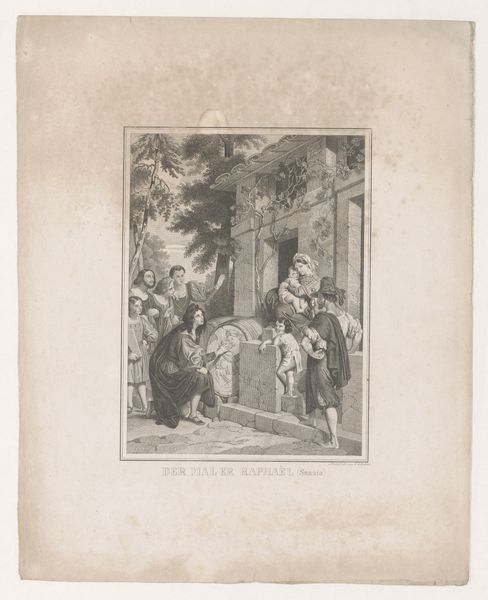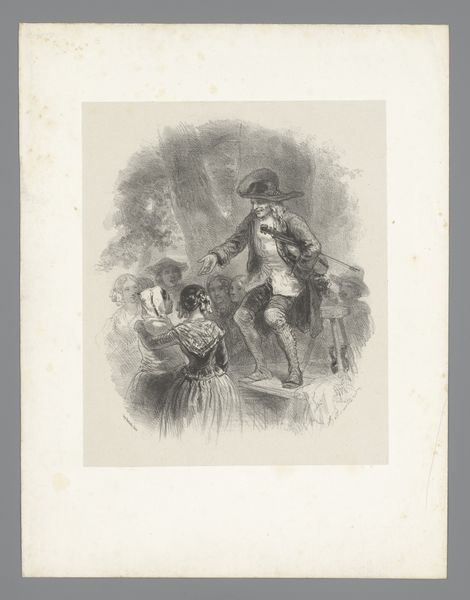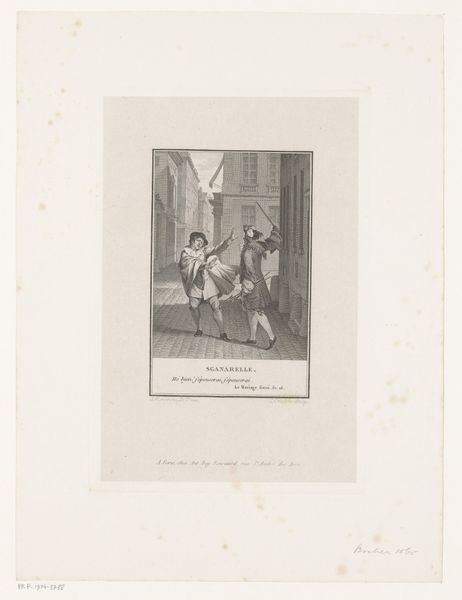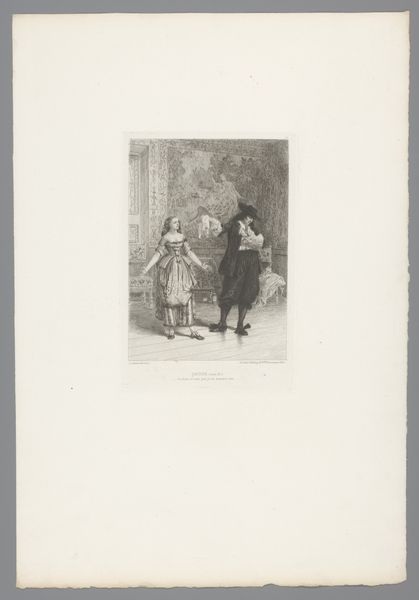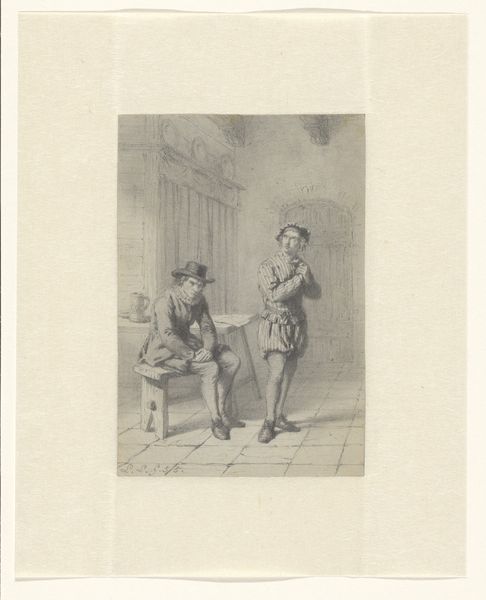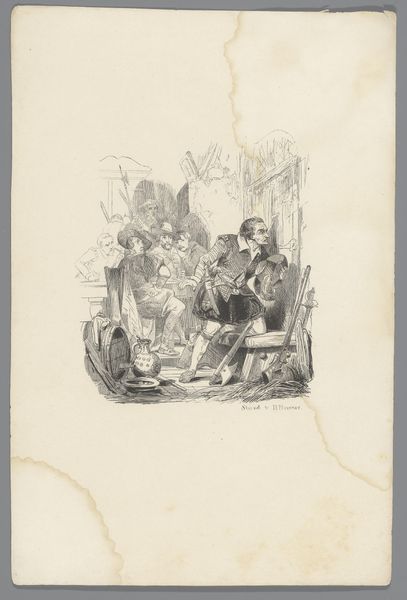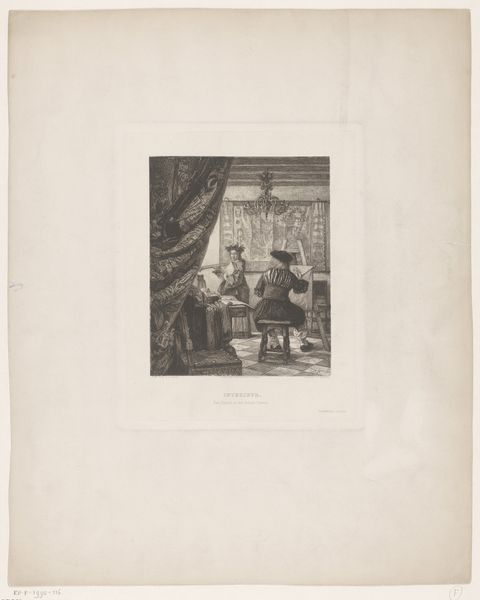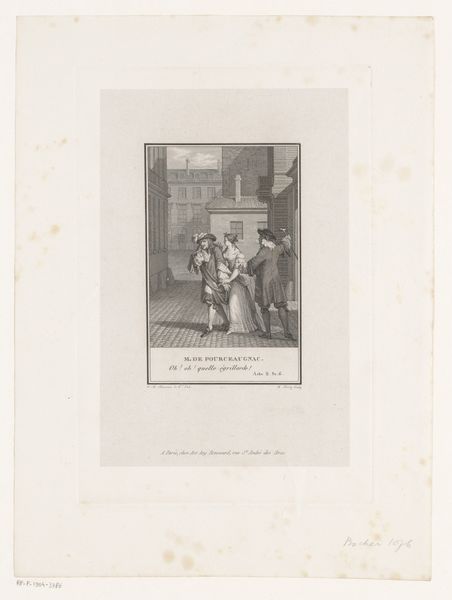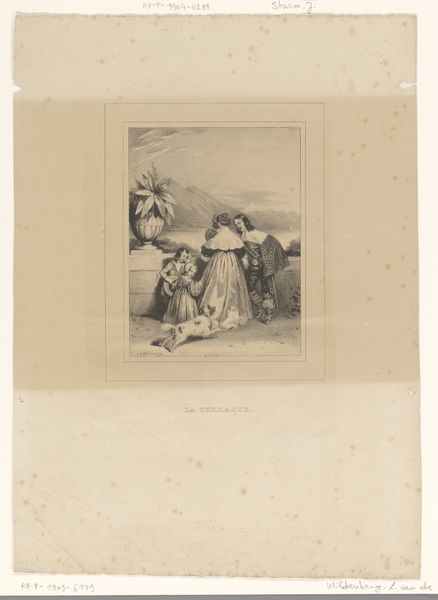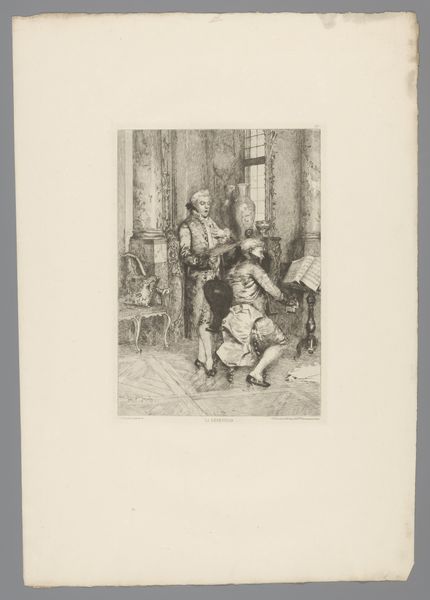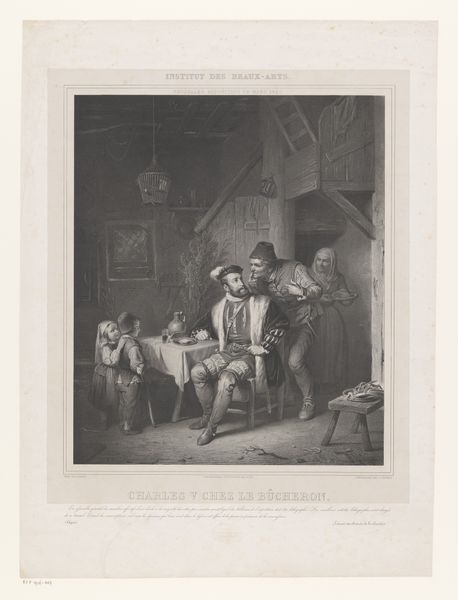
print, engraving
#
narrative-art
# print
#
landscape
#
figuration
#
romanticism
#
genre-painting
#
engraving
Dimensions: height 444 mm, width 305 mm
Copyright: Rijks Museum: Open Domain
Curator: "Tuinman geeft rozen aan een vrouw," or "Gardener Giving Roses to a Woman," created between 1840 and 1842 by Jean-Baptiste Adolphe Lafosse. It resides here at the Rijksmuseum, a little pocket of romance from another era. Editor: Oh, it's terribly sweet! Slightly melancholic, though. All in grayscale, it's like a memory fading into the past. Look at that gardener, all smiles, offering these pale roses. You can almost smell them, can't you? A whispered secret of love and loss among the leaves... Curator: Indeed. It’s an engraving, a print, and aligns beautifully with the romanticism of the time. There’s a certain idealized version of rural life here. The narrative art aspect emphasizes an unspoken story, framed within this idyllic landscape. Editor: Exactly. And what is it about that doorway in the background? There's another figure lurking back there! Like someone witnessing a moment that wasn't meant for their eyes. Adds a layer of...drama. It is romanticism after all, isn't it? Must have a twist. Curator: Well, romanticism embraced heightened emotions, often contrasted with an idealized view of nature and rustic life. This image embodies genre-painting tropes. Love, labor, virtue—all presented through a particular lens of social expectation, wouldn't you say? It’s designed for public consumption. Editor: Perhaps. I feel that artist captured more than just that, though. See how the gardener is positioned low, offering roses upwards, she looks like a deity receiving a gift... To me it sings more simply as an ode to longing. It makes you wonder, doesn't it? What their life would be and where they would wander. Curator: A captivating perspective, indeed. That doorway now resonates as a boundary or the uncertain futures they could make. Editor: That it does! Thanks for guiding me through it.
Comments
No comments
Be the first to comment and join the conversation on the ultimate creative platform.
